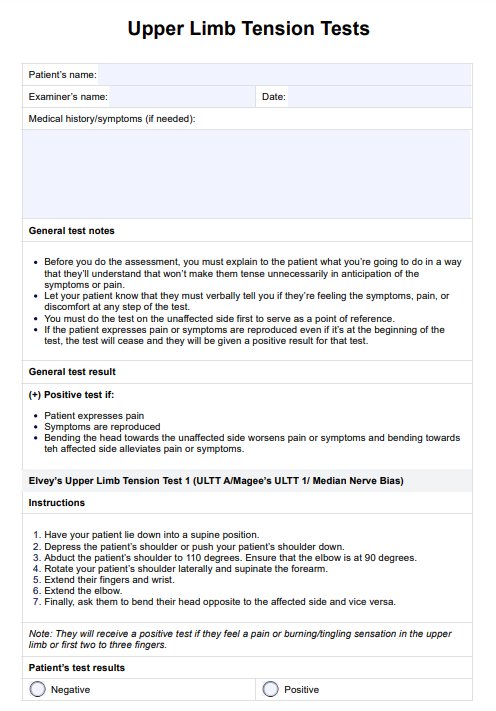According to a study by Schmid et al. (2009), the tests have moderate to substantial reliability. However, future diagnostic test accuracy studies must still be done to ensure that the test has more diagnostic accuracy.

Upper Limb Tension Tests
Check the neurological structure of your patient’s upper limbs with the upper limb tension tests. Click here for a template and a guide on how to use it.
Upper Limb Tension Tests Template
Commonly asked questions
To score, you simply have to tick the “positive” or “negative” checkbox that matches the observed reaction or response.
The Upper Limb Tension tests for several disorders or disabilities such as cervical radiculopathy or peripheral neuropathy. [expand this answer to mention what each ULTT variant targets. For example, mention that the ULTT 1 targets the median nerve, and so on. use the keyword "radial nerve neurodynamic test" for SEO reasons]
EHR and practice management software
Get started for free
*No credit card required
Free
$0/usd
Unlimited clients
Telehealth
1GB of storage
Client portal text
Automated billing and online payments











